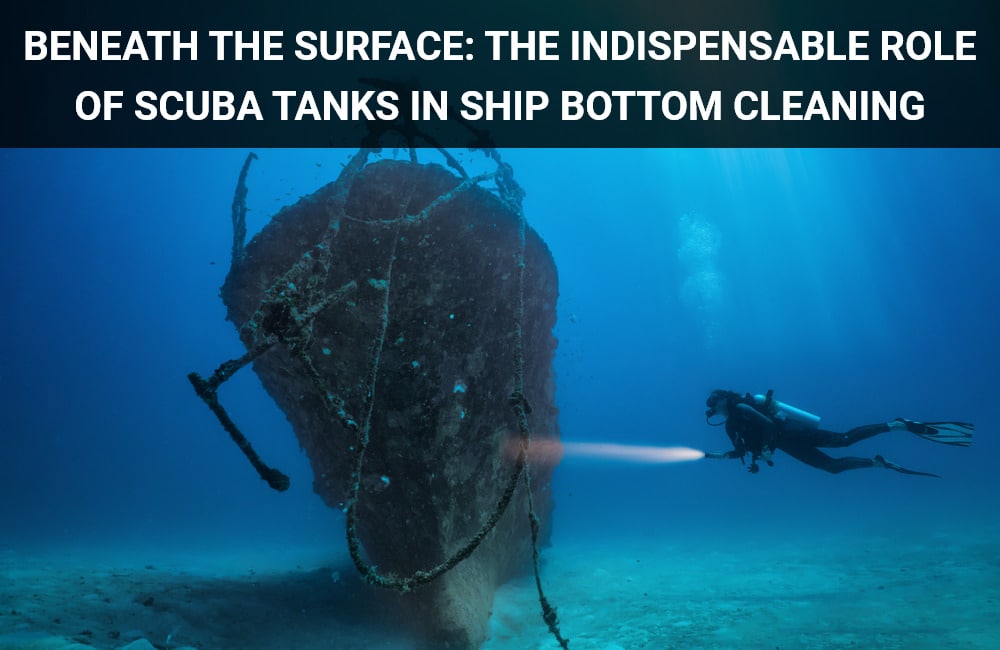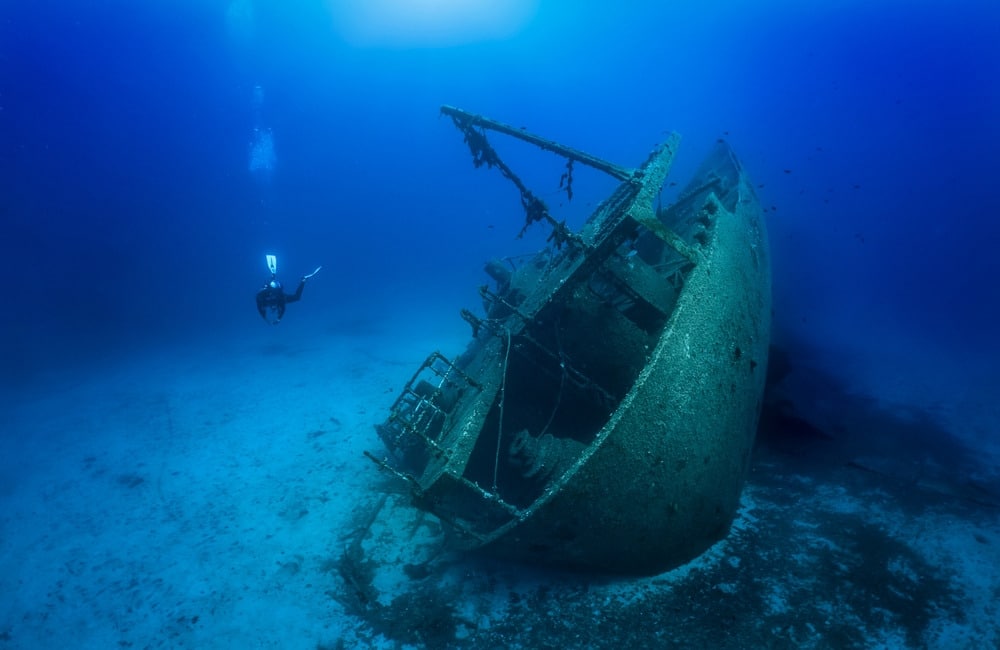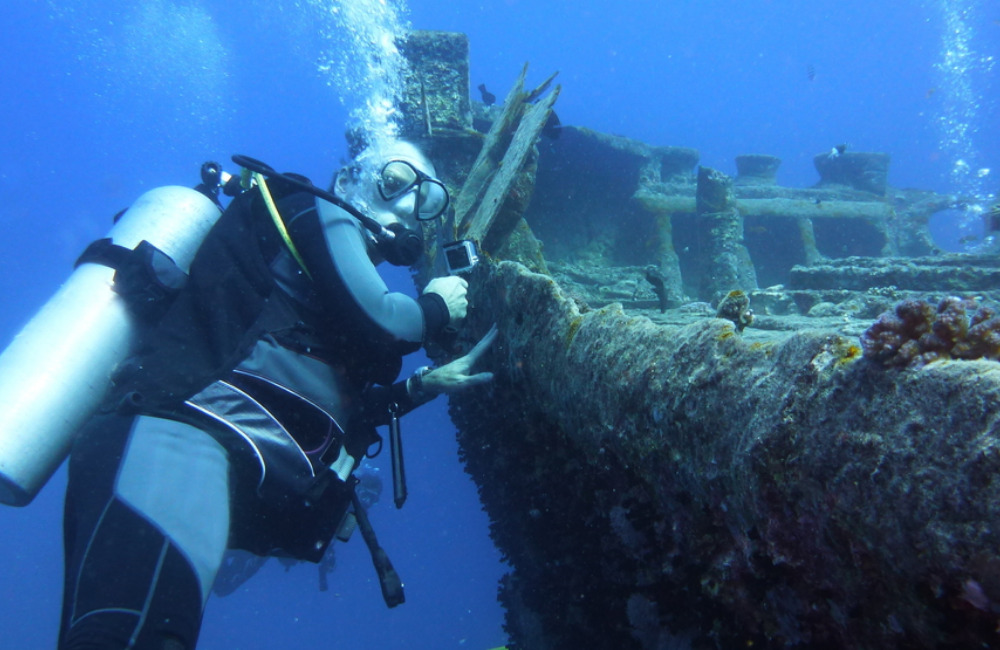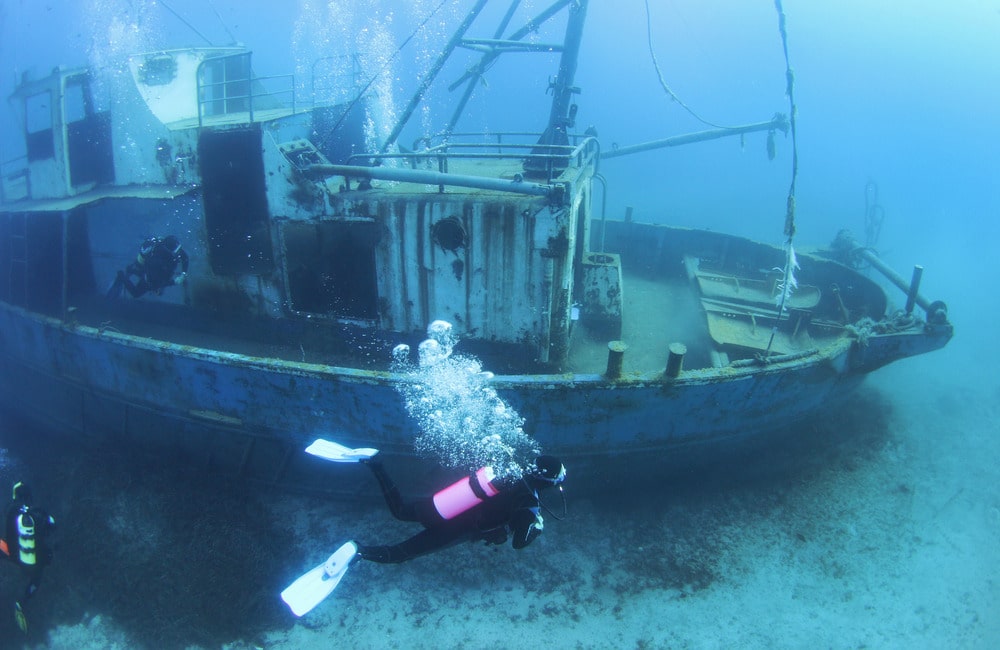Blog
Beneath the Surface: The Indispensable Role of Scuba Tanks in Ship Bottom Cleaning
As a ship glides through the ocean, its hull is constantly bombarded by barnacles, algae, and other marine growths that can seriously impede its performance. Over time, these pesky organisms can compromise the vessel’s maneuverability, fuel efficiency, and overall lifespan. That’s why ship bottom cleaning is an essential aspect of marine maintenance.
And when it comes to performing this critical task, scuba tanks are an indispensable tool. With their ability to provide divers with a constant supply of compressed air, these sturdy containers allow them to stay underwater for extended periods of time, scouring every inch of a ship’s underbelly to ensure that it remains in top-notch condition.
Without scuba tanks, the process of ship bottom cleaning would be far less efficient, less effective, and potentially more dangerous for those involved. So, the next time you marvel at the effortless grace of a sea-faring vessel, take a moment to appreciate the indispensable role that scuba tanks play in keeping it ship-shaped.
Understanding Ship Bottom Cleaning 
As ships travel through oceans, streams, and ports, they encounter an underwater world that can leave a trail of unwanted waste on the vessel’s hull. This phenomenon, known as “ship bottom fouling,” can be detrimental to a ship’s efficiency and increase its fuel consumption. Fortunately, ship bottom cleaning methods have been developed to counteract the negative effects of fouling.
Some of the most common cleaning methods include brushes, high-pressure water jets, scuba tanks, and chemicals. However, underwater hull cleaning presents several challenges and risks, such as exposure to hazardous materials and possible damage to the ship’s structure.
It’s crucial to understand the importance of maintaining a clean hull while also taking precautions to ensure the safety of everyone involved. With proper knowledge and techniques, ship bottom cleaning can be done effectively and efficiently, leaving vessels ready to sail the seas with minimal obstruction.
The Significance of Scuba Tanks in Ship Bottom Cleaning 
The art of ship bottom cleaning is not an easy task by any means, let alone trying to do it without any breathing gear underwater. Scuba tanks play a crucial role in providing divers with the supply of breathing gas needed for this task. With scuba tanks, divers are able to perform extended dive times and increase productivity with ease.
The bonus of enhanced mobility and maneuverability allows them to access and clean hard-to-reach areas, which would otherwise be impossible without the use of these tanks. With the assistance of scuba tanks, underwater cleaning operations become a more achievable task for divers. It’s no wonder that scuba tanks have become such an important aspect of the underwater cleaning industry.
Utilizing Scuba Tanks in Ship Bottom Cleaning Procedures
Following are the ways how to utilize scuba tanks in ship bottom cleaning procedures:
Preparations and Safety Measures Before Diving
Scuba diving isn’t all just ocean views and exotic marine life. In fact, with the help of scuba tanks, it has proved to be an effective method in cleaning ship bottoms. But before anyone takes the plunge, proper preparations and safety measures should be observed. Equipment checks and maintenance should be done to avoid malfunctioning gears in the middle of a dive.
A well-planned dive alongside a thorough risk assessment will eliminate unnecessary dangers for the diver. If you’re thinking of utilizing scuba tanks in ship bottom cleaning procedures, remember to factor in these guidelines to achieve a successful and safe underwater experience.
Dive Operations with Scuba Tanks
When it comes to ship bottom cleaning procedures, scuba tanks are often utilized in dive operations. Experienced divers must not only descend safely but maintain proper buoyancy throughout the process. Cleaning techniques and tools used underwater are also crucial in efficiently removing any debris or harmful substances.
Dealing with underwater visibility and environmental conditions can present challenges, but with the right gear and experience, divers can successfully complete the task at hand. Utilizing scuba tanks in ship bottom cleaning procedures is a testament to the power of innovation and modern technology in preserving our oceans and the vessels that traverse them.
Post-Dive Procedures and Equipment Maintenance
After completing an underwater ship bottom cleaning task utilizing a scuba tank, it’s important to take post-dive procedures and equipment maintenance seriously. Not only does it ensure the safety of the diver, but it also helps to prolong the life of the equipment. Once the dive is completed, divers should always rinse their scuba tanks with fresh water to remove salt and debris buildup.
For the regulator, it’s important to disassemble and rinse thoroughly, paying close attention to the breathing mechanism. Any signs of damage or wear and tear should be addressed immediately to avoid equipment malfunction down the line. By following these post-dive procedures and maintaining the equipment regularly, divers can continue to utilize their scuba tanks for ship bottom cleaning tasks safely and effectively.
Safety Considerations in Ship Bottom Cleaning with Scuba Tanks
Ship bottom cleaning may sound like a straightforward task, but it is not without risks. In fact, it can be dangerous for the divers who undertake it. That’s why it’s crucial to prioritize safety considerations when cleaning the underside of a vessel. Proper training and certification are essential for divers to maintain safety in such situations.
Knowledge and skills to handle unforeseen circumstances such as entanglement or decompression sickness are vital to ensure successful clean-up operations. Additionally, communication and safety protocols should be established between divers and support personnel to keep everyone informed about what’s happening throughout the process.
Indeed, these steps may seem like common sense, but it’s crucial to put them into practice for a successful and safe ship bottom cleaning operation.
Benefits and Advancements in Scuba Tank Technology for Ship Bottom Cleaning
As the demand for ship bottom cleaning continues to grow, advancements in scuba tank technology have made it easier for divers to stay underwater for longer. Thanks to improved tank design and superior materials, divers can now enjoy unprecedented gas capacity and extended dive times. Not only that, but the introduction of innovative cleaning tools and equipment has also made the process more efficient, reducing the time required to complete the task.
With these new developments, ship cleaning companies have a lot to gain, from faster turnaround times to higher levels of customer satisfaction. The future of ship bottom cleaning looks bright, and with continued investment in scuba tank technology, we can expect even more benefits and advancements in the years to come.
Regulatory Compliance and Environmental Responsibility in Ship Bottom Cleaning
When it comes to ship bottom cleaning, regulatory compliance, and environmental responsibility are not just buzzwords – they are crucial elements of the process. In order to keep our waters clean and avoid any negative impact on marine life, it is vital that we adhere to local regulations and guidelines for underwater cleaning.
This means that we must use only the most effective and environmentally-friendly cleaning methods and take measures to mitigate any negative impact that may occur as a result of the cleaning process. Additionally, it is essential that we dispose of all the cleaning waste and contaminants properly, leaving no trace behind that could potentially harm the ecosystem.
By prioritizing regulatory compliance and environmental responsibility in ship bottom cleaning, we can ensure that our waters remain clean and healthy for generations to come.
Success Stories: Showcasing the Impact of Scuba Tank-Enabled Ship Bottom Cleaning 
Scuba tank-enabled ship bottom cleaning has proven to be a game changer for underwater maintenance and conservation efforts. Success stories abound, illustrating the profound impact that this innovative cleaning technique has had.
From the restoration of delicate underwater ecosystems to the efficient removal of invasive species, scuba tank-enabled ship bottom cleaning has opened up a world of possibilities. With this approach, divers can traverse previously inaccessible parts of a ship’s hull and ensure that it remains in pristine condition.
Real-Life Examples of Successful Ship Bottom Cleaning Operations Using Scuba Tanks
The use of scuba tanks has revolutionized the ship bottom cleaning industry, with diver cleaning services becoming increasingly popular. Some of the most successful examples can be found in the bustling ports of Asia, where these diving services have been used to combat the notorious challenges of fouling in the warm and nutrient-rich waters of the region. In Hong Kong, the divers are trained to clean 25 vessels a month, even in the busiest shipping times.
The successful operations around the world have proven that with advanced technology and skilled divers, the days of using toxic and harmful chemicals to clean ship bottoms are fast becoming a thing of the past.
The Final Word
As we near the end of our discussion on the role of scuba tanks in ship bottom cleaning, it is clear that these cylinders are indispensable tools for maritime maintenance. From diving deep to scrub away hazardous barnacles to inspecting crucial components of a ship’s hull, scuba tanks offer unparalleled access for professionals in the field.
However, it is important to remember that with great power comes great responsibility. Safety should always be the top priority when using scuba tanks, which means proper training and environmental consciousness are crucial. Looking toward the future, advancements in scuba tank technology hold the promise of even safer and more efficient ship maintenance.
So, let us continue to dive deep and explore the endless possibilities that scuba tanks have to offer.



